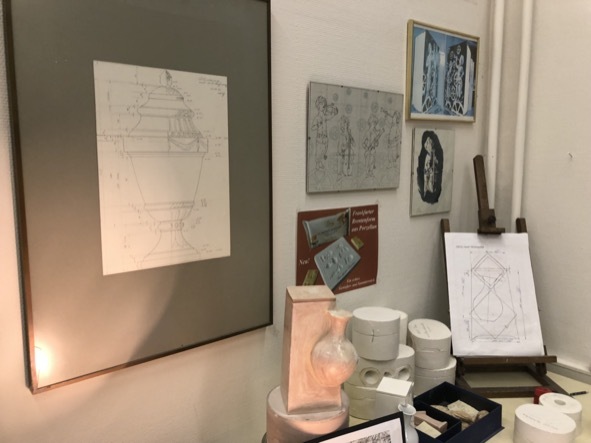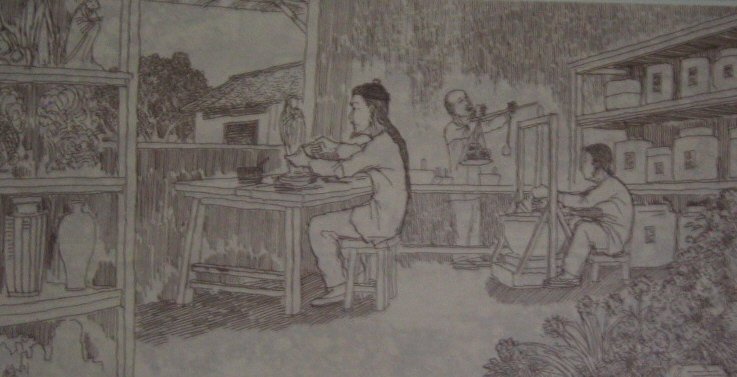Modelling
Modelling in porcelain production
In the meaning of the word, the verb "to model" stands for the creation of a form from a certain material. The noun "model" describes a unique piece or a template for the production of further copies. The Duden dictionary describes "modellieren" as a weak verb for the plastic forming, shaping and processing of materials. A little bit of everything applies to the term porcelain modeller. The relevant specialist literature also provides very little in the way of a definition of a porcelain modeller. Even Friedl mentions the modeller only four times in his two works, and unfortunately only in one word each time. We therefore take the liberty of defining porcelain modeller in two separate ways.
The modeller as craftsman & artist
Ever since people have been able to make fire, they have been equally concerned with storing water and food. Historical finds from 4,000 BC show pottery made from ribbon pottery. Finds from the national museums of Foshan (China) and Hanoi (Vietnam) show vessels for storage made of high-fired pottery from between 2,600 and 3,000 years before Christ. This art of pottery, with which ceramic objects are produced by hand or on a rotary wheel, has survived to this day. It is also a popular hobby in many places.
This type of processing of a ceramic material - including porcelain - is called modelling. In this way, the manual work alone creates a model that is truly unique in the truest sense of the word.
The modeller as mould maker & technician

In today's world, the term "porcelain modeller" has been assigned to the forefather of a master mould. If you google the term "porcelain modeller", you will come across an almost endless list of names and manufactories:
- Johann Kändler (1706-1775)
- Franz Konrad Link (1730-1793)
- Johann Peters Melchior (1747-1807)
- Franz Kotta (1760 - 1821)
- and many more
Interestingly, almost all historical porcelain modellers bear the addition "sculptor" or "artist". This obviously documents that the pieces that these modellers designed themselves were also produced by them. In the modern porcelain industry, the former designers - i.e. the modellers - are sometimes replaced by well-known designers, such as
- Heinz H. Engler (Bauscher)
- Helmut Drexler (Rosenthal)
- Wilhelm Wagenfeld (Fürstenberg / Rosenthal)
- Marguerite Friedlaender (KPM)
- Björn Wiinblad (Rosenthal)
- Pablo Picasso (Lengsfeld Rhön)
- Anna Golin (Eschenbach)
- Luigi Colani (Friesland)
- and many more
These porcelain designers "design" the respective piece or tableware and then hand over the mould construction and technical implementation for production to the "modeller", who is responsible for the construction of the master mould (original mould).
Today's porcelain modeller is therefore a technician who transforms the design of an item into a production form.
Due to a change in values, brand value creation has declined sharply over the past 30 years. Own brands such as Esprit, H&M, Hermes and others can completely dispense with the use of designer names. In the hotel porcelain and catering tableware segment, hardly any host pays more for a plate because it was created by a designer. Third-party designers cost huge amounts of money!
Unnamed are the many porcelain modellers who implement a design or shape themselves according to general specifications and descriptions. The true heroes of the modern porcelain industry are those who have mastered the art of transforming an idea expressed in words into a solid object.
We would therefore like to express our thanks to our partners, modellers and model setters.

